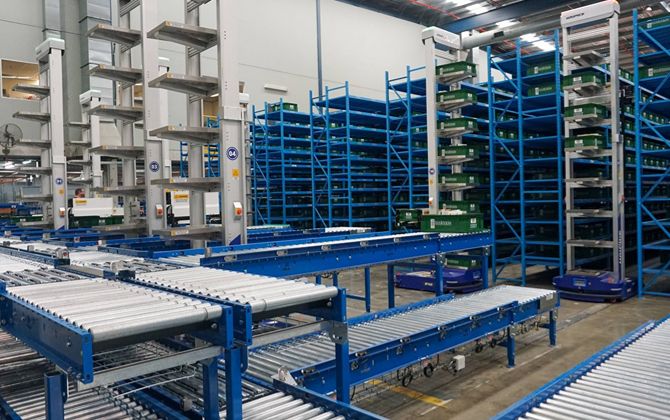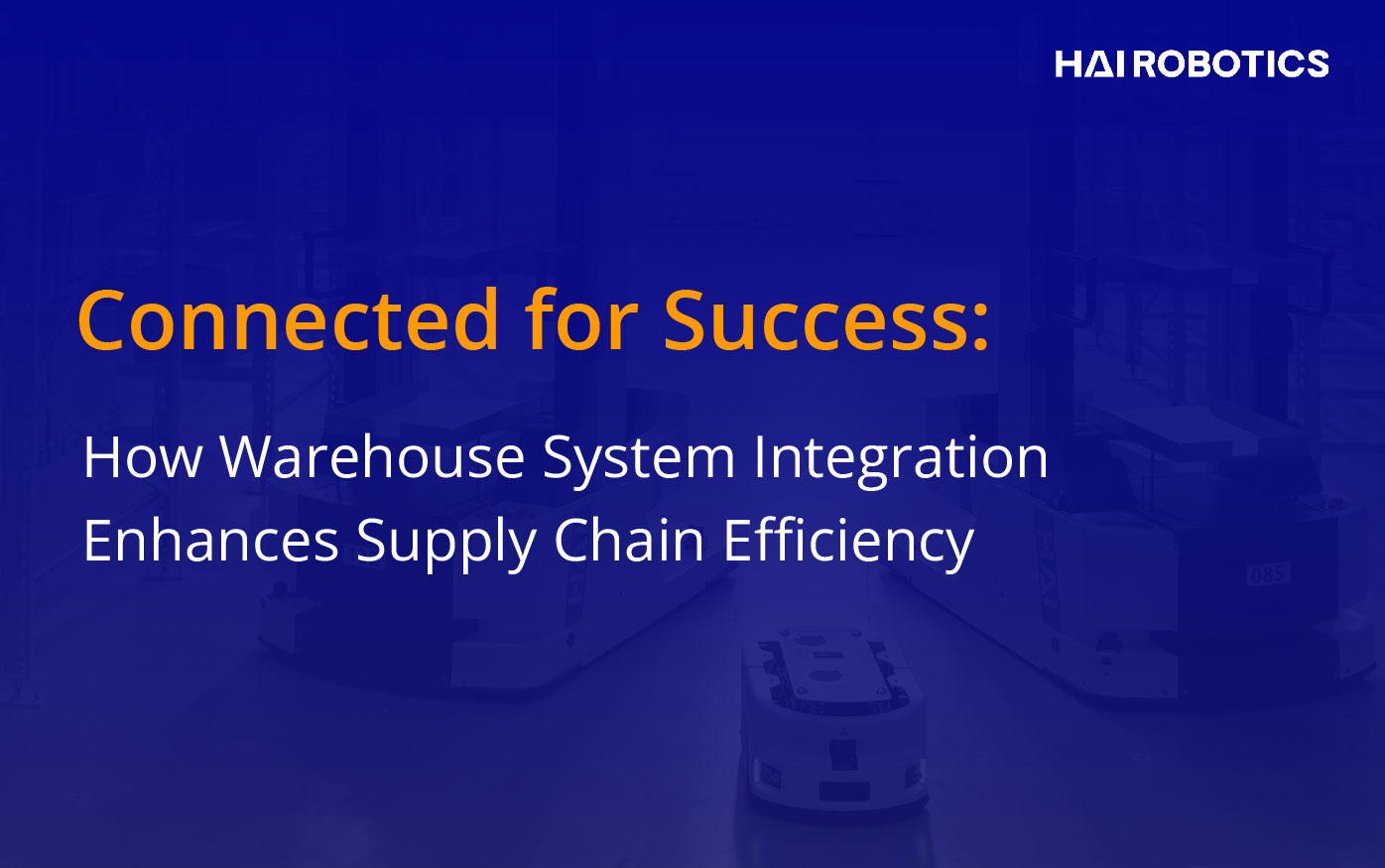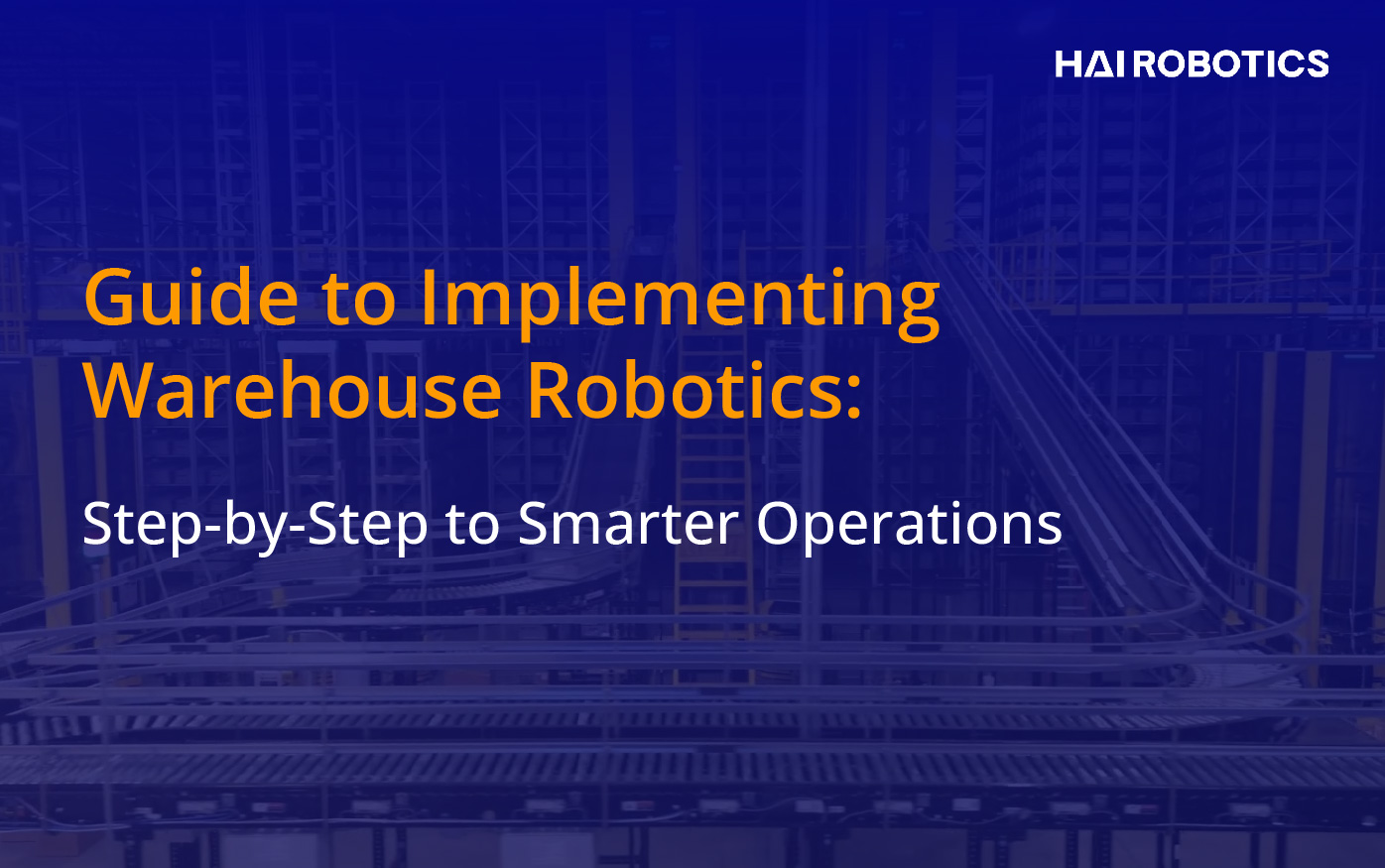System Integration: Why is it Crucial for Warehouse Automation?
Discover how effective warehouse systems integration boosts efficiency, reduces labor costs, and ensures scalable warehouse automation. Learn from Hai Robotics’ case achieving 800% putaway improvement.
Implementing warehouse automation is no longer just about deploying advanced robots or high-performance material handling equipment. The true challenge—and the true ROI—comes from storeroom material handling system integration. If not integrated correctly, even cutting-edge automation may end up fragmented, inefficient, or fall short of expectations.
In today's fast-evolving logistics world, combining different systems is an essential skill for modern distribution centers, warehouse operators, and third-party logistics providers (3PLs). These organizations are increasingly looking for ways to improve their operations by focusing on efficiency, getting better insights into their processes, and enhancing their ability to scale when necessary. Highlighting system integration is crucial to staying competitive in a fast-paced and adaptable market.
The Role of Warehouse Systems Integrators in Storeroom and Warehouse Automation
Warehouse automation involves multiple components—software, hardware, robotics, and workflows. Warehouse systems integrators make sure that all elements work together as one coordinated system.
A qualified systems integrator:
-
designs end-to-end automation architecture
-
aligns solutions with operational workflows
-
integrates automation with ERP / WMS
-
validates system performance through testing
-
supports long-term maintenance and upgrades
While robotics suppliers provide the technology (AMRs, AS/RS, ACRs, robotic arms, conveyors), warehouse automation system integrators ensure these technologies deliver actual business value.
The question is not simply “Which robot should I buy?” but rather “How do I integrate the right technologies into a cohesive, scalable system?”
Warehouse systems integrators play a pivotal role in bridging robotics, software platforms, and material flow. These warehouse automation system integrators ensure that AMRs, AS/RS, ACR systems, conveyors, and other material handling technologies function as a synchronized, high-performance ecosystem.
Why Directly Buying Robots Is Not Enough
A lot of warehouses think that buying robotic equipment directly will resolve their operation problems. However, automation success depends on:
-
system harmony
-
accurate data flow
-
workflow reengineering
-
orchestration between software and equipment
A robot that does not have the capability to connect or work together with your warehouse management system (WMS) or the system that controls your equipment is unable to efficiently improve various important processes. These processes include picking items, restocking supplies, or determining the best timing for releasing orders. Without this integration, the robot cannot optimize operations efficiently to boost overall productivity and efficiency in your warehouse setting. This is where system integrators create value—by transforming standalone technologies into a coordinated, high-performance operation.
Case Study: BPS Global x Hai Robotics — Integration That Delivers ROI
Australia’s largest online bookstore partnered with BPS Global, a leading warehouse systems integrator, to modernize its DC in Lidcombe, NSW.
After evaluating multiple automation technologies, BPS selected Hai Robotics’ ACR system and delivered measurable outcomes:
-
800% improvement in putaway efficiency
-
significant gains in fulfillment speed and accuracy
-
integrated recirculating conveyor workflows
-
improved workstation utilization with flexible tote routing
-
enhanced safety by separating robots from forklifts and operators
This project’s success was driven not just by robotics, but by effective storeroom material handling system integration—ensuring smooth data flow, precise orchestration, and optimized workstation interactions.

Key Integration Challenges in Storeroom Material Handling System Integration
Implementing automation is rarely about hardware issues—it is almost always about software integration. Common challenges include:
-
ERP / WMS limitations
Many legacy systems lack the APIs or logic needed to communicate effectively with automation.
-
Misalignment of functional responsibilities
When WMS and automation control systems either overlap or leave gaps, operational inefficiencies arise.
-
Workflow not adapted to automation
Even the best technology cannot compensate for processes that were not redesigned for automated environments.
-
Missing real-time orchestration
Poor pick waving, order release sequencing, or task assignment leads to suboptimal throughput.
Proper integration ensures automation supports—not restricts—operational strategy.
Why Integration Matters to Business Performance
Automation is implemented for strategic reasons:
-
faster speed to market
-
higher throughput during peak seasons
-
improved order accuracy
-
lower labor dependency
-
increased storage density
All these benefits rely on tight integration between systems, software platforms, and physical automation.
Integration ensures that:
-
data flows accurately between ERP → WMS → WCS → robots
-
performance bottlenecks are minimized
-
the system adapts to business changes
-
warehouse staff can operate automation confidently
A perfectly integrated system becomes an enabler of transformation—not just a collection of machines.
Why Integration Matters to End Customers
The end customer is the final judge of operational efficiency.
Without proper integration, automation may cause:
-
delayed order processing
-
inaccurate inventory
-
slower shipping times
-
inconsistent service levels
Well-integrated automation strengthens the supply chain, enabling faster fulfillment and reliable service—directly improving the customer experience.
Hai Robotics offers different solutions to improve warehouse efficiency, providing three unique levels of integration. These integration choices vary from basic plug-in installations that offer quick and easy setup, to complete end-to-end system integration, making sure every part of the warehouse operations functions smoothly together. This flexibility allows customers to choose the level of integration that best suits their specific operational needs and goals.
When companies work with skilled warehouse systems integrators like BPS Global, they can gain noticeable benefits in their daily operations. This partnership helps to streamline their processes, leading to smoother and more efficient operations. As a result, companies often see an increase in throughput, meaning they can handle more products and fulfill orders more quickly. Moreover, investing in these systems usually provides quicker returns, leading to faster benefits for the business, enhancing overall success.
Conclusion
Storeroom material handling system integration plays a pivotal role in warehouse automation. Hardware alone does not drive performance—system integration does. By collaborating with experienced warehouse automation system integrators and utilizing the adaptable robotic solutions provided by Hai Robotics, businesses can achieve significant improvements in their operational efficiency. This partnership not only enhances reliability within their processes but also allows for greater scalability, enabling companies to grow and respond to changing market demands more effectively.

